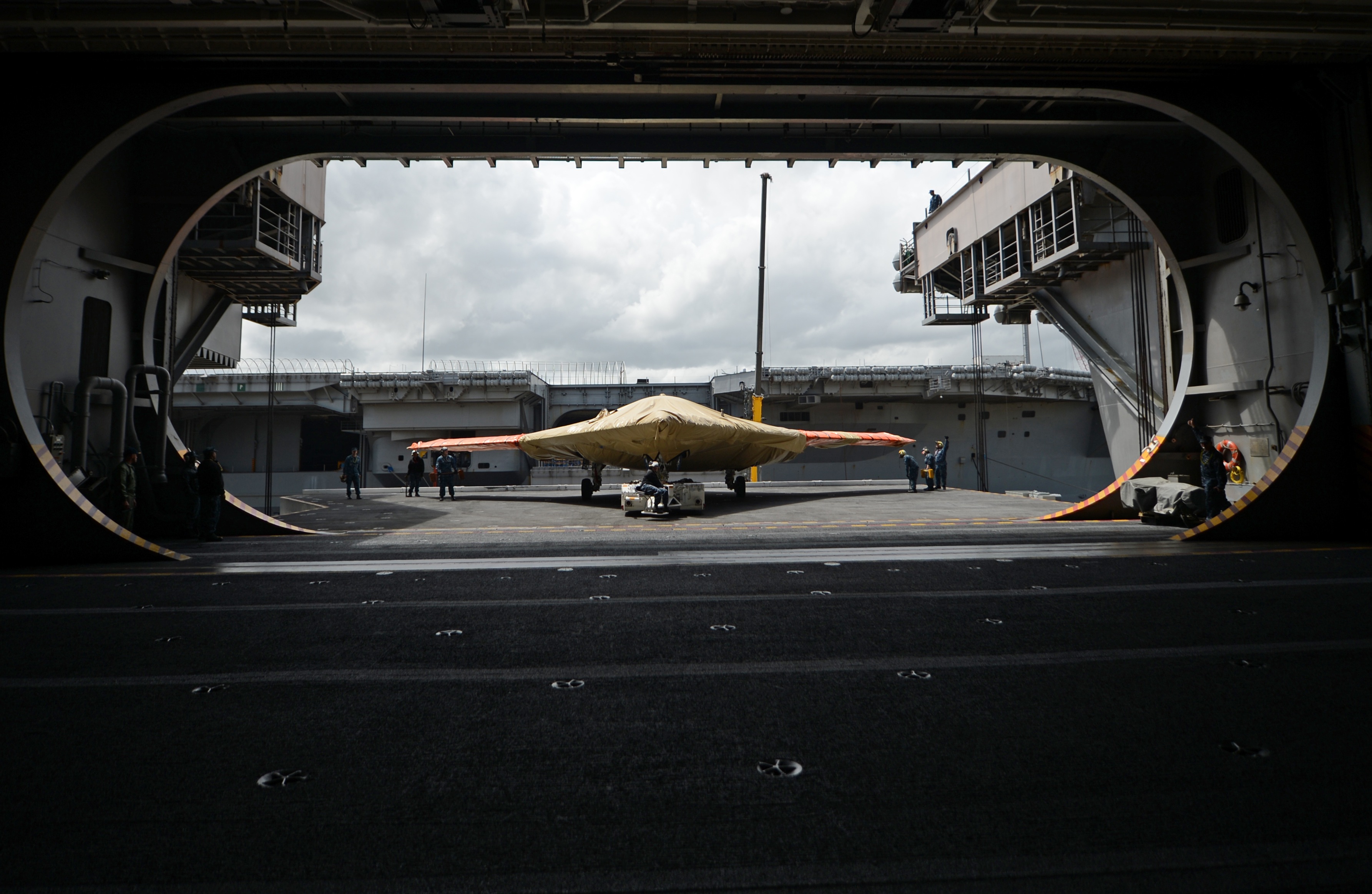
The Navy wants to change the Pentagon imposed designation of its RAQ-25 carrier-based unmanned aerial tanker with its own nom-de-drone – Stingray.
References to the RAQ-25 Stingray unmanned aerial vehicles (UAV) are found throughout draft written testimony submitted to Congress ahead of Department of the Navy budget hearings next week, several sources confirmed to USNI News.
The name change is not unexpected. Navy officials told USNI News earlier this month that the service was less than enthusiastic about the name big Pentagon came up with for the RAQ-25 – the Carrier Based Aerial Refueling System (CBARS).
“I’m not sure I’m too much in love with that CBARS name, we’ll come up with something better than that,” Chief of Naval Operations Adm. John Richardson said on Feb. 12.
The change in name for the Stingray – formerly: CBARS; UCLASS; N-UCAS; J-UCAS – is the third name for the RAQ-25 in the last three months and indicative of the churn surrounding the restructure of the Naval Air Systems Command (NAVAIR) led-program in the last year.
As part of an Office of the Secretary of Defense led evaluation of all of the services’ UAVs, it was determined to dial back some of the higher-end strike and information, surveillance and reconnaissance requirements for the RAQ-25 and focus the effort on easing the burden on the Boeing F-18E/F Super Hornet fighters that currently serve as tankers for the carrier air wing.
“We’re probably going to drop some of the high-end specs and try to grow the class and increase the survivability [later],” Vice Adm. Joseph Mulloy, deputy chief of naval operations for integration of capabilities and resources, told USNI News earlier this month.
“It has to be more refueling, a little bit of ISR, weapons later and focus on its ability to be the flying truck.
To indicate the shift in emphasis, CBARS was the name of the moment picked by big Pentagon over the holiday lull in December ahead of the Fiscal Year 2017 budget rollout but the service wasn’t “enamored” with the choice, Mulloy said.
A NAVAIR representative did not immediately return a Friday request for comment on the name change to USNI News.
A spokesman for Secretary of the Navy Ray Mabus – the official in charge of naming service’s ships – would not confirm the name change to USNI News when asked Friday afternoon.
It’s also unclear if the name Stingray is a reference to Mabus – an advocate for unmanned aviation who said in 2015 the Lockheed Martin F-35 Lighting II Joint Strike Fighter would likely be the last manned strike fighter the Navy would ever buy.
Subtle honorifics in Navy program designations are not new.
The retired Grumman F-14 Tomcat, in part, pays homage to the late Vice Adm. Thomas F. Connolly who crafted the requirements for the interceptor. During development of the F-14, some on the program to refer to the fighter as “Tom’s cat.”
Now the Navy is preparing a presentation of the new Stingray requirements for the Joint Requirements Oversight Council ahead of an anticipated draft request for proposal (RfP) this year to the four companies expected to bid on the RAQ-25 work – General Atomics, Boeing, Lockheed Martin and Northrop Grumman.





